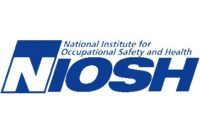By Audrey Reichard, Suzanne Marsh, and Rebecca Olsavsky
Work-related injuries frequently occur, despite the fact that many are preventable. It is critical that we accurately describe and monitor these injuries in order to improve prevention efforts.
Because there is no comprehensive data source that captures all work-related injuries, the occupational injury community relies on multiple sources to describe the problem. The occupational supplement to the National Electronic Injury Surveillance System (NEISS-Work) is a surveillance system that provides one piece of the picture by capturing nonfatal occupational injuries treated in emergency departments (ED). The National Institute for Occupational Safety and Health (NIOSH) works with the U.S. Consumer Product Safety Commission to capture NEISS-Work data from a national sample of approximately 67 hospital EDs. These data include persons working for pay or compensation, working on a farm, or volunteering for an organized group.
In an effort to better understand the accuracy and process of identifying work-related cases from ED records, NIOSH conducted on-site assessments at 20 hospitals in the NEISS-Work sample. NIOSH staff worked closely with the NEISS-Work coders at each hospital to understand the challenges of identifying work-related cases and capturing the related data.
NIOSH found several factors that facilitated the identification of work-related cases. The presence and use of a work-related indicator (e.g., a checkbox for “injury at work”) in the ED record clearly aided the process. Other indicators of work-relatedness are in various parts of the ED record. Having all parts of the ED record readily available to the NEISS-Work coders improved the chance of identifying cases. Also, coders who regularly interacted with ED staff, whether through formal training or informal conversations, noted that this improved the quality of the work-related information in the ED record.
NEISS-Work case identification criteria often requires a review of the entire ED record. Coders with access to only select parts of the records were limited in their ability to identify work-related cases. Coders also encountered barriers related to...Click here to read the rest of the blog post on the NIOSH website.








